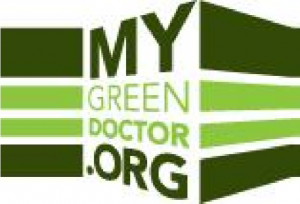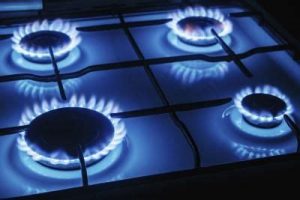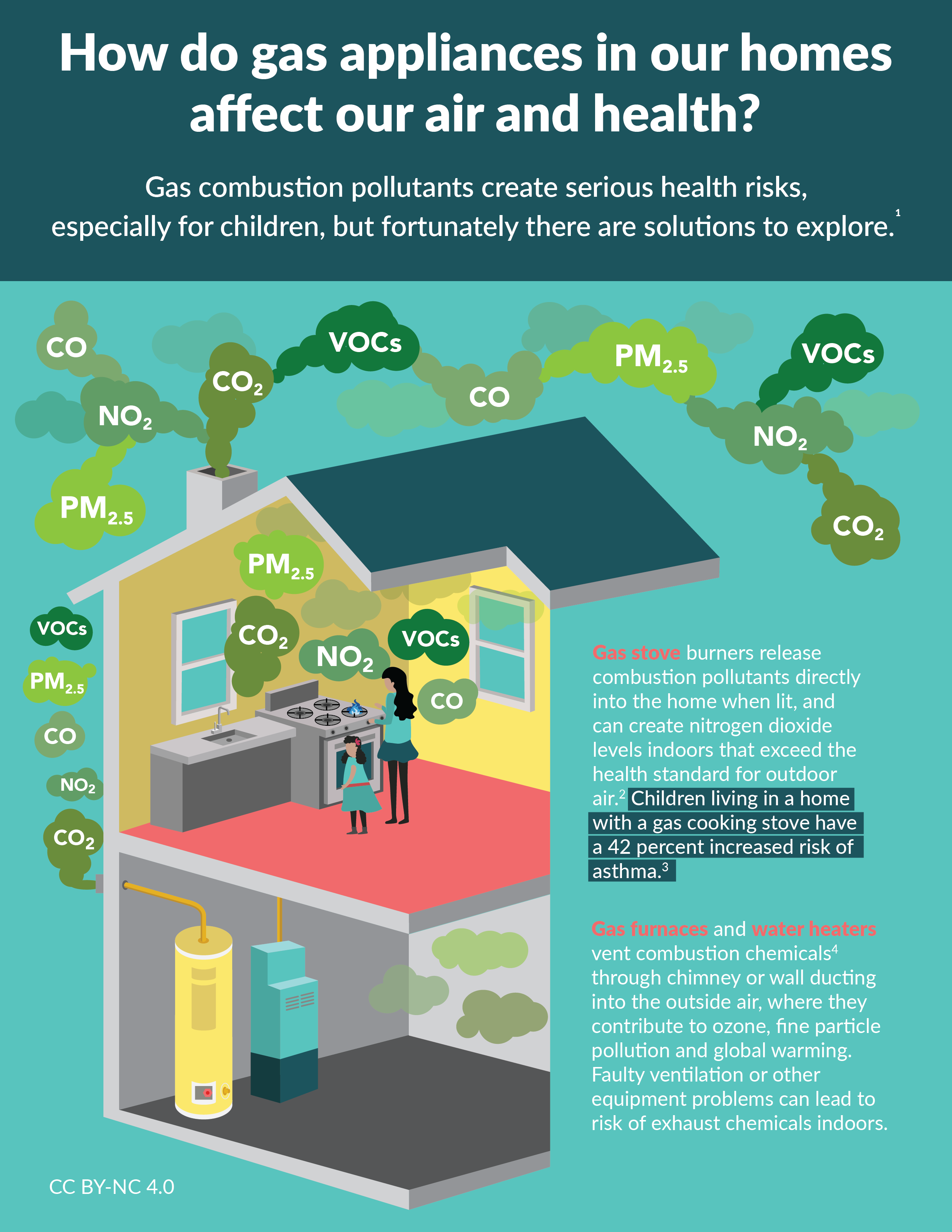 Author: Todd L Sack MD
Author: Todd L Sack MD
Cleaner air inside your home will improve your family’s health, especially for children, for people with known lung problems such as asthma, and for the elderly. Cleaner air can mean fewer asthma and allergy attacks, fewer doctor visits, and fewer days missed from school or work. The U.S. Environmental Protection Agency tells us that in most houses the air inside is dirtier than the air outside!
Kitchen Fumes & Gas Stoves: Cooking produces many forms of air pollution, some of which may even cause cancer. Restaurant kitchens are required to have powerful ventilation fans to protect workers  from dangerous air toxins, but home cooks are left vulnerable. If your stove has a fan that vents to the outside, always turn on the fan when you cook. Choose to use your stove’s back burners because air pollution there is better carried away by the fan. If you don’t have an exhaust fan, open windows whenever possible and keep people with asthma or other lung problems out of the kitchen while food is being cooked.
from dangerous air toxins, but home cooks are left vulnerable. If your stove has a fan that vents to the outside, always turn on the fan when you cook. Choose to use your stove’s back burners because air pollution there is better carried away by the fan. If you don’t have an exhaust fan, open windows whenever possible and keep people with asthma or other lung problems out of the kitchen while food is being cooked.
There is recent awareness that gas stoves– those that burn methane (also known as “natural gas”) or propane– release large quantities of asthma-provoking nitrous oxide and a kind of pollution called, “particulates”. A study in Australia found that 12% of asthma attacks in children are linked to gas stoves!2 Methane also is a serious greenhouse gas and contributor to climate change. If you can, choose one of the highly efficient “induction electric” stove cooking tops instead of gas burners.
Energy Efficiency = Better Health: Energy efficiency means getting more benefits from the energy we use. For example, an energy-efficient heater uses less energy to warm a home. That means burning less of the dirty fossil fuels such as methane, coal, fuel oil, diesel and gasoline. This keeps the outdoor air cleaner to help prevent illness. You save money by buying the most efficient appliances (see “Heating & Cooling” below). You will also save by adding modern insulation to your home, by having well-sealed windows and door frames, and by setting your home thermostats wisely to 68° degrees F. (20 ° C.) for winter heating and 74° F. (23 ° C.) for summer cooling. EcoAmerica’s website has more tips for energy efficiency and the benefits to our health and to the climate: https://climateforhealth.org/ .
“In most houses the air INSIDE is dirtier than the air OUTSIDE!”
Heating & Cooling: Try to choose the most efficient, cleanest-operating machines to heat or cool you home. In the United States, these are appliances that carry the Energy Star ratings; appliances sold in Europe carry the EU Energy Label. Energy Star or EU Energy Label products may be a bit more expensive to buy but will be far less expensive to operate and they produce less air pollution. Look for an energy use label on every product you buy that uses energy, including the big machines such as air conditioners, stoves and refrigerators. You can read about Energy Star and other money-saving ideas at the U.S. Environmental Protection Agency’s website, https://www.energystar.gov .
Keep these machines well-maintained and check the air filters at least every three months or according to the manufacturer’s instructions.
Common Household Air Pollutants: Any smoke is harmful, whether from tobacco, fireplaces, wood stoves, or even candles (scented or non-scented). So is the odorless nitrogen dioxide gas from methane gas stoves and the fumes from cooking. Beware of any scents added to the home, including incense, perfumes, hair sprays, and air fresheners. Cleaning products often contain irritating chemicals, particularly any form of bleach. Finally, general home cleanliness helps to keep down levels of mold, mildew, household dust, pet hair, and insect droppings (such as cockroach droppings).
Windows Open? : Open your windows to allow clean outdoor air into your home. This is usually the healthiest choice. The exceptions would be if you live within 100 yards or meters of a busy street or factory, or during a high-pollen day, or on a very hot day when you may need to operate the air conditioner. If you must close the windows a lot, it becomes even more important to keep your air filters clean.
Chemicals: Your home likely contains hundreds of chemicals. Each by itself may be safe, but these linger in your home and can create real long term dangers. Think carefully before bringing any chemical into your home as it is likely to become something that you will breathe. The worst are products containing bleach which is bad for both our lungs and the environment.
Here are a few easy things that your family can do to help keep chemicals out: 1. Open your windows as much as possible to allow fresh air to enter, 2. Leave shoes at the front door to keep outdoor shoes from tracking dirt and chemicals into your home, 3. Leave new products–such as electronics , furniture, carpeting and plastics–outdoors or in a well-ventilated space for one week for toxic gases to evaporate (“off-gassing”). Some these ideas come from a great guide from Earth Easy: https://learn.eartheasy.com/guides/how-to-reduce-exposure-to-indoor-toxins/ .
At My Green Doctor, there’s a free waiting room for poster to alert patients, titled “Indoor Air & Health”: https://mygreendoctor.org/wp-content/uploads/2020/01/Stoves-Health-Infographic-Page-1-only-2020.png .

Dr. Todd Sack is Editor for My Green Doctor, a free environmental sustainability service that is helping hundreds of healthcare offices to save money and to share sustainability ideas with office colleagues and with their patients. My Green Doctor is a partnership of twelve health professional societies that offer My Green Doctor to their members as a free membership benefit. Register at https://mygreendoctor.org/ .
References:
1. https://www.nationalasthma.org.au/living-with-asthma/resources/patients-carers/factsheets/gas-stoves-and-asthma-in-children
2. “Damp housing, gas stoves, and the burden of childhood asthma in Australia” Luke D Knibbs, Solomon Woldeyohannes, Guy B Marks and Christine T Cowie Med J Aust 2018; 208 (7): 299-302. || https://bit.ly/31rdD0t
3. https://www.asthmahandbook.org.au/clinical-issues/triggers/avoidable-triggers/
4. “Pollutant Exposures from Natural Gas Cooking Burners: A Simulation-Based Assessment for Southern California” Jennifer M. Logue, Neil E. Klepeis , Agnes B. Lobscheid , and Brett C. Singer, Environmental Health Perspectives 2014, 122 https://doi.org/10.1289/ehp.1306673
5. American Council for an Energy-Efficient Economy: Their website has excellent resources on the topics of home energy efficiency & improving health: https://www.aceee.org/ .

